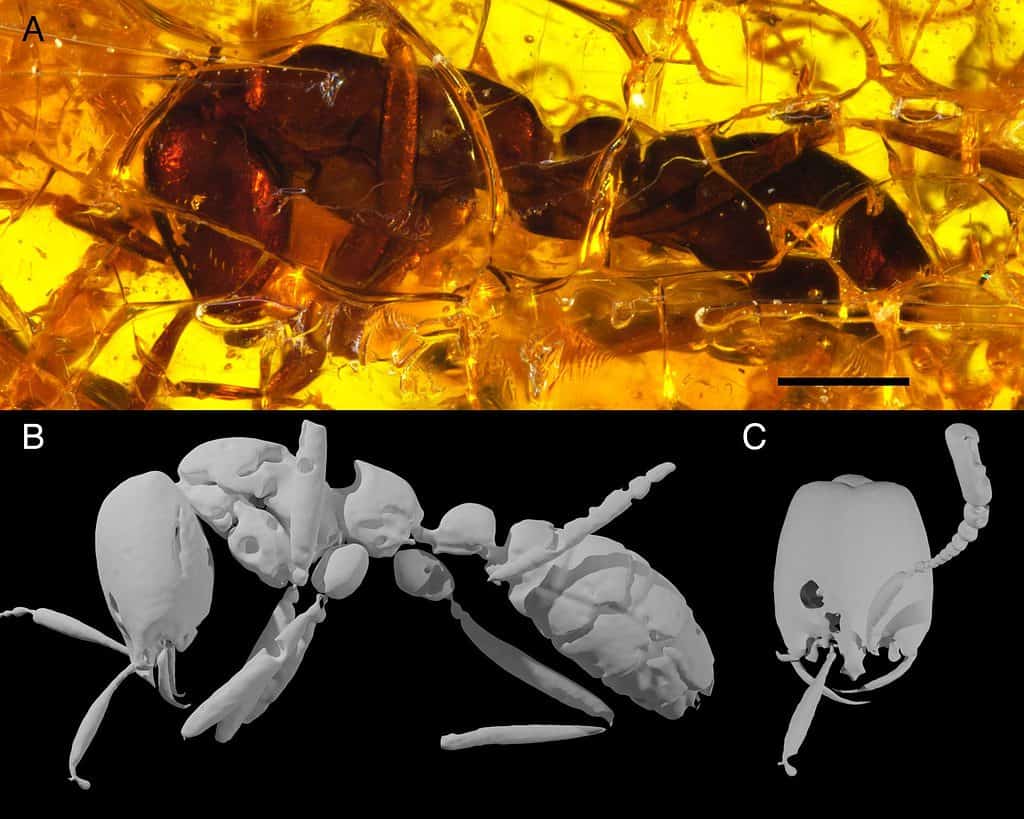Army ants (Dorylinae) form some of the largest insect societies on the planet. They live in colonies, consume large amounts of arthropods (invertebrates with joint legs) and are nomadic, moving around the world so they don’t run out of food.
Their lifestyle has taken them to most continents of Earth, with over 200 army ant species now living in the Eastern Hemisphere and about 150 across North and South America. Thanks to a new fossil discovery, scientists have now discovered that the predators once lived in Europe, despite not eating their way across the continent today.

Researchers from the Colorado State University and the New Jersey Institute of Technology detail in their paper in the journal Biology Letters the discovery of the oldest army ant on record. The specimen was preserved in Baltic amber, dating back to the Eocene Epoch (about 35 million years ago), and it’s about three millimetres long.
The eyeless specimen was named Dissimulodorylus perseus (D. perseus) by the researchers after the mythical Greek hero Perseus who famously defeated the Gorgon Medusa with limited use of sight. This is just the second fossil army ant species ever described, and the first one recovered from the Eastern Hemisphere.
“This amber would have been excavated around or before the 1930s, so to now learn it contained a rare army ant is surprising enough, much less one that demonstrates these ants roamed Europe,” Phillip Barden, study author, said in a statement. “With this fossil we’ve gained a rare paleontological porthole into the history of these unique predators.”
Looking into the army ants
The researchers said this ant fossil gives evidence of previously unknown army any lineages that would have existed across Continental Europe before going extinct at some point in the past 50 million years. The fossil was actually hidden among many others at Harvard’s University Museum of Comparative Zoology, hiding in plain sight.
“The museum houses hundreds of drawers full of insect fossils, but I happened to come across a tiny specimen labelled as a common type of ant while gathering data for another project,” Christine Sosiak, the study’s lead author, detailed in a media statement. “Once I put the ant under the microscope, I immediately realized the label was inaccurate.”
When the ant fossil was formed, Europe had a much hotter and wetter climate than it has today, the researchers said. This could have provided an ideal living environment for the army ants, which prefer a more humid and tropical environment. Europe has gone through several cooling cycles over the years, likely becoming inhospitable to the ants.
The researchers also found an enlarged antibiotic gland on the fossil that is typically found in other army ants and helps them live underground. This gland suggests that the European army ant was well suited for subterranean living. Sosiak said this was a lucky find as ants were less likely to come into contact with the tree resin that forms fossils.
The fossilized specimen was likely an army ant worker that was involved in carrying its queen’s larvae and raiding for food with soldier ants when it was alive, Sosiak said. It likely got lost from its fellow hunters and fell into sticky tree resin, which eventually solidified and encased the ant – allowing it to be studied by the team today.
Was this helpful?



